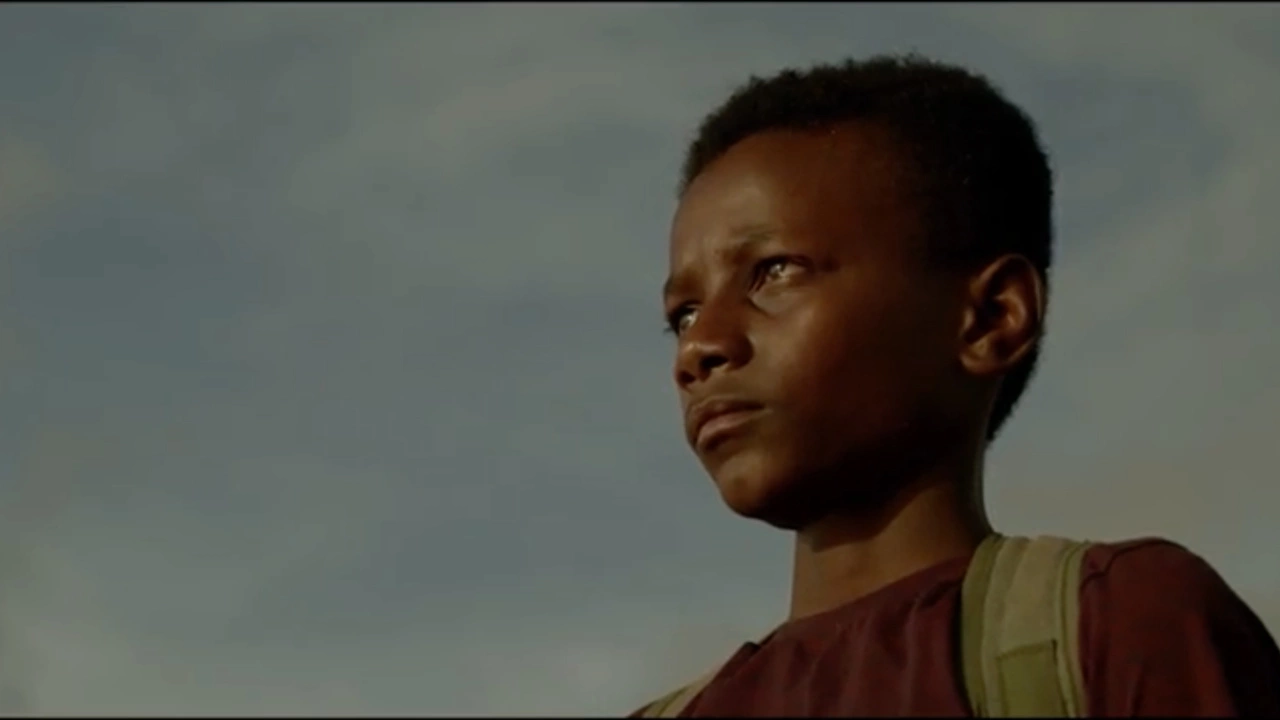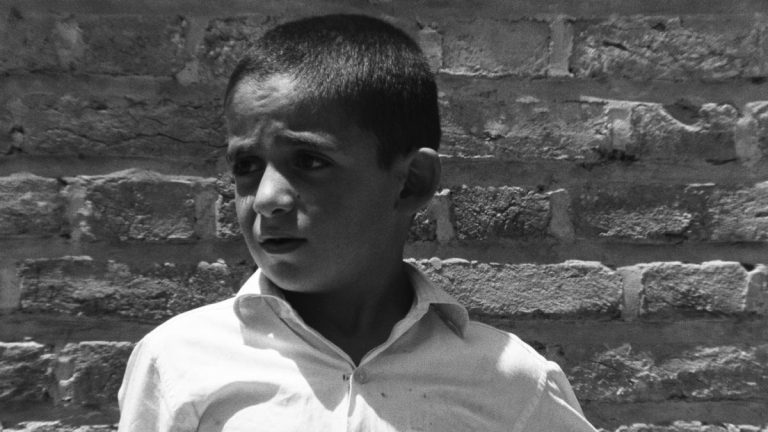The genealogical tracing of a community, or even the discovery of a community as a result of colonization and slavery that had occurred over six centuries ago, is fascinating. The result is the exploration of one such community, the Siddi community (Siddi means the enlightened one). The Siddis reside within the forests of Karnataka, living and nourishing through the forest, drawing upon knowledge of their ancestry even as their ancestry is deleted, almost lost within the myths.
Director Jayan Cherian, who had shot the film in the town of Yellapur and the surrounding villages like Kelase, would hire people from that community to act in his film. Having been immersed within the community for over five years, he finally brings forth a narrative that would serve to highlight the coming-of-age of a 12-year-old youth from the Siddi community.
The movie’s beginning and ending, accompanied by dance and music are interesting bookends. When the film begins, Jayaram Siddi watches in silence and curiosity, almost as an audience surrogate, as his father, under the supervision of the shaman, conducts the rituals of the passing away of Jayaram’s grandfather. The evening would be filled with merriment and dancing, aggressively to the tune of the dammam, a percussive instrument. It’s fascinating to watch how Cherian alternates between the modes of shooting.
For most of the film, Cherian utilizes static and long takes, uncut and meditative, to show the rituals or the actions of each character uninterrupted. But while shooting these percussion-heavy, joyous dance sequences, Cherian uses a hand-held camera to immerse the audience in the movement and the beat of the music as well, as to highlight the cultural intricacies and the communities’ profound connection with music.
The film works very well when it details every aspect of the Siddi community in Yellapur and how the families struggle not just with interpersonal dynamics (battle over land and ancestry), but also with access to education. There is a striking sequence where Jayaram’s father begs for a loan from a landlord, which shows the subjugation of the community by the higher-caste communities. If I have to state concisely, it works well when leaning into Cherian’s documentary tendencies.

The choice to make a film is not just a heartwarming one; it’s also democratic. To highlight the existence of a community through a medium as democratic as film is admirable. To utilize the narrative of a coming-of-age story of a young boy having to deal not just with the passing of an elder but also reconcile with one’s ancestry and try to come to terms with it while navigating the pitfalls of the present automatically takes into account the religious intonations of the coming-of-age rituals.
Such intonations give this narrative an air of specificity. However, the choice to inculcate magical realism by invoking myths, showing dream sequences of ancestors suffering under the yoke of slavery, and trying to break through the yoke is largely ambitious but also distant. The sequences are striking visually, integrating the forested, foggy beauty of the mountains with their eeriness. But the integration of wobbly CGI feels strange and pulls you out of the film.
Chinmaya Siddi, who essays the role of Jayaram, is largely supposed to evoke confusion and curiosity as he navigates through his elders’ limited knowledge about their scattered history while also reconciling with the dreams plaguing him. These give rise to interesting situations whereby different religious rituals to ward off “spirits” ultimately fail. The intent of these sequences is clear—to highlight how the Siddi had been co-opted into different religions throughout the eras of history.
While the intent of all the scenes within the film remains clear, Cherian’s choice to keep the camera static in some sequences, like Jayaram’s first day of school or Jayaram praying to a Hindu god along with the rest of the kids at the Tribal Hostel for Boys, feels unnecessary. It is in these sequences where a fly-on-the-wall perspective or overarching documentation might have helped this film’s pacing.
The film chooses to end with Jayaram finally embracing the rituals of his community to ward off and essentially reconcile with the visions of intergenerational trauma. It ends in another hand-held camera sequence, with Jayaram now under the control of the Dhammam, playing and producing the beat of the revelry, as a form of rebirth or coming-of-age too is accompanied by the Dammam’s rhythm, similar to the opening sequence that signified death. As a film created to provide the voice of a community through an accessible substrate like a narrative feature, “Rhythm of Dammam” does its job admirably well.




![Two Gods [2021] Review: A gracefully handled documentary about a casket maker and his prodigies](https://79468c92.delivery.rocketcdn.me/wp-content/uploads/2021/06/Two-Gods-1-768x432.jpg)
![Sorry We Missed You [2019] ‘MAMI’ Review – Repercussions of shifting Gig-economy](https://79468c92.delivery.rocketcdn.me/wp-content/uploads/2019/11/Sorry-We-Missed-You-Review-768x432.jpg)
![Mr. Thank You [1936] Review – A Bittersweet and Deeply Humane Road Movie Classic](https://79468c92.delivery.rocketcdn.me/wp-content/uploads/2019/12/Mr.-Thank-You-1936-768x576.jpeg)
![Feels Good Man [2020] Review – An Entertaining Documentary on the Zaniness and Palpable Perils of the Internet Culture](https://79468c92.delivery.rocketcdn.me/wp-content/uploads/2021/02/Feels-Good-Man-2020-768x405.jpg)

![Sange Meel Se Mulaqat [1989] Review: An Enchanting Documentary on Ustad Bismillah Khan](https://79468c92.delivery.rocketcdn.me/wp-content/uploads/2020/11/Sange-Meel-Se-Mulaqat-768x432.jpg)